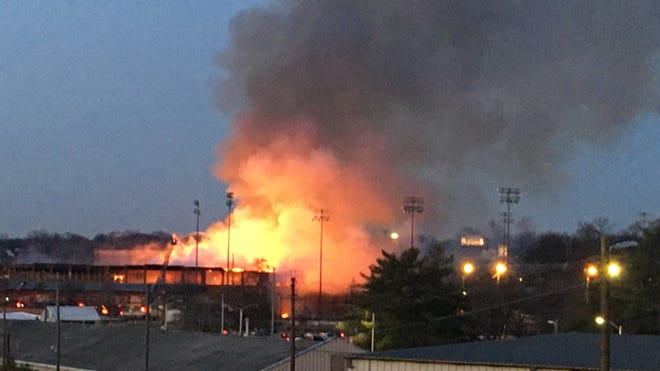By the mid-1940s, nearly one in four Knoxville residents knew someone who worked in the local textile industry, run by the powerful Standard Knitting Mill on Washington Avenue.
Today, only one building remains, which makes the city’s moniker “Underwear Capital of the World” seem far-fetched to the modern Knoxvillian.
Despite two weekend fires that devastated the factory’s last physical footprint, the 120-year history remains intact through memories and decades-old newspaper clippings.
Drawing on the Knox News archive and insights from Knox Heritage, we look back at some of the most interesting stories from Standard Knitting Mill’s past and the developers who are reimagining what the property could become.
Standard knitting mill:Why investigators may never know the cause of the second fire
The humble beginnings of Standard Knitting Mill
Standard Knitting Mill has called Washington Avenue home since the company was founded in 1900. At first, the company operated in a small one-story building with only 50 employees.
The factory expanded into several buildings over the years and employed nearly 4,000 people at its peak. Only one structure remains from the standard knitting mill, according to Knox Heritage.
The remaining building, which caught fire on Sunday, is about 455,000 square feet over four levels, according to owners WRS Inc.
Textiles were once Knoxville’s main industry
Nearly 25% of Knoxville residents had a direct family connection or knew someone connected to the industry in the mid-1940s, according to Knox Heritage.

In 1962, around 8,000 people were employed by the local textile industry in 30 companies. Standard Knitting Mill led the way with 3,500 employees, who earned an annual total of $12 million, according to Knox News records.
In 1964, Standard Knitting Mill was making 10,000 garments per hour
Earnest Rodgers, vice president of the factory in 1964, told a Rotary club at the time that the factory produced almost enough each day to partially clothe every person in Knoxville. Within a year, the factory would make about one garment for every four people in the United States, according to Knox News records.

This high production frequency, which included around 10,000 garments per hour, led Standard Knitting Mill to sell around $30 million in merchandise worldwide in 1963. That would be nearly $275 million today, according to a calculator. inflation rate online.
Making a garment in 1978 took over 35 steps
A 1978 edition of “America’s Textiles” magazine held in the Knox News archives detailed the material flow at Standard Knitting Mill, which involved more than 35 steps, including fiber inspection, combing, cone winding, stitching and shrinkage control.
Benefits were ahead of their time
Lunch breaks at Standard Knitting Mill in the 1920s could include a variety of activities, from concerts to sidewalk bowling contests to carnivals, according to Knox Heritage.
The facility even had a public library extension and closed for a week during the holiday season for employee vacations.
Multiple health services were also provided at a “reasonable cost”, according to Knox Heritage, including dental care at an on-site clinic. Costs were deducted from salaries, but the factory would pay for certain procedures if employees had a legitimate reason for not being able to pay for them.
Employees who were absent from work due to illness had a nurse dispatched to their home for an assessment. The factory sent a doctor if the nurse deemed it necessary and paid for the visit if the employee could not afford it.

The plant honored its employees by inducting them into a club made up of members with at least 25 years of service with the company. The “25 Year Club” had 1,264 members in 1975, according to Knox Heritage, and continued until the factory closed in 1989.
Employees had a daily prayer session
At 10 a.m. sharp, a steamboat-like whistle sounded throughout the mill to signify a daily prayer session. The long-standing tradition began in 1917 during World War I and was brought back during World War II, according to Knox News records.

The tradition continued until the facility closed in 1989, according to Knox Heritage.
The silent prayer lasted for a minute, until the whistle sounded again at 10:01 a.m. and the machines were turned on again. Another whistle sounded at 6 p.m. and a midnight prayer session was signaled by flashing lights in the factory.
Delta Apparel left the property in 2007
While Delta Apparel didn’t leave Standard Knitting Mill until 2007, according to previous reports from Knox News, the facility closed in 1989.
Delta Apparel was created when Royal Manufacturing and Standard Knitting Mills merged their knitted apparel operations in September 1988, according to a press release in the Knox News archives.


